Widespread recombination, reassortment, and transmission of unbalanced compound viral genotypes in natural arenavirus infections
- PMID: 25993603
- PMCID: PMC4438980
- DOI: 10.1371/journal.ppat.1004900
Widespread recombination, reassortment, and transmission of unbalanced compound viral genotypes in natural arenavirus infections
Abstract
Arenaviruses are one of the largest families of human hemorrhagic fever viruses and are known to infect both mammals and snakes. Arenaviruses package a large (L) and small (S) genome segment in their virions. For segmented RNA viruses like these, novel genotypes can be generated through mutation, recombination, and reassortment. Although it is believed that an ancient recombination event led to the emergence of a new lineage of mammalian arenaviruses, neither recombination nor reassortment has been definitively documented in natural arenavirus infections. Here, we used metagenomic sequencing to survey the viral diversity present in captive arenavirus-infected snakes. From 48 infected animals, we determined the complete or near complete sequence of 210 genome segments that grouped into 23 L and 11 S genotypes. The majority of snakes were multiply infected, with up to 4 distinct S and 11 distinct L segment genotypes in individual animals. This S/L imbalance was typical: in all cases intrahost L segment genotypes outnumbered S genotypes, and a particular S segment genotype dominated in individual animals and at a population level. We corroborated sequencing results by qRT-PCR and virus isolation, and isolates replicated as ensembles in culture. Numerous instances of recombination and reassortment were detected, including recombinant segments with unusual organizations featuring 2 intergenic regions and superfluous content, which were capable of stable replication and transmission despite their atypical structures. Overall, this represents intrahost diversity of an extent and form that goes well beyond what has been observed for arenaviruses or for viruses in general. This diversity can be plausibly attributed to the captive intermingling of sub-clinically infected wild-caught snakes. Thus, beyond providing a unique opportunity to study arenavirus evolution and adaptation, these findings allow the investigation of unintended anthropogenic impacts on viral ecology, diversity, and disease potential.
Conflict of interest statement
The authors have declared that no competing interests exist.
Figures
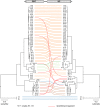
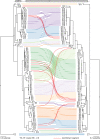
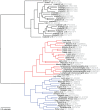
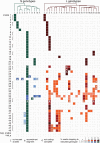

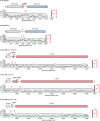

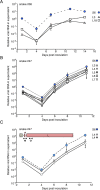
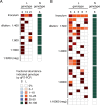
Similar articles
-
Detection of novel divergent arenaviruses in boid snakes with inclusion body disease in The Netherlands.J Gen Virol. 2013 Jun;94(Pt 6):1206-1210. doi: 10.1099/vir.0.051995-0. Epub 2013 Mar 6. J Gen Virol. 2013. PMID: 23468423
-
Isolation, identification, and characterization of novel arenaviruses, the etiological agents of boid inclusion body disease.J Virol. 2013 Oct;87(20):10918-35. doi: 10.1128/JVI.01123-13. Epub 2013 Aug 7. J Virol. 2013. PMID: 23926354 Free PMC article.
-
Identification, characterization, and in vitro culture of highly divergent arenaviruses from boa constrictors and annulated tree boas: candidate etiological agents for snake inclusion body disease.mBio. 2012 Aug 14;3(4):e00180-12. doi: 10.1128/mBio.00180-12. Print 2012. mBio. 2012. PMID: 22893382 Free PMC article.
-
Arenavirus Quasispecies and Their Biological Implications.Curr Top Microbiol Immunol. 2016;392:231-76. doi: 10.1007/82_2015_468. Curr Top Microbiol Immunol. 2016. PMID: 26472215 Free PMC article. Review.
-
Arenavirus variations due to host-specific adaptation.Viruses. 2013 Jan 17;5(1):241-78. doi: 10.3390/v5010241. Viruses. 2013. PMID: 23344562 Free PMC article. Review.
Cited by
-
Ancient Evolution of Mammarenaviruses: Adaptation via Changes in the L Protein and No Evidence for Host-Virus Codivergence.Genome Biol Evol. 2018 Mar 1;10(3):863-874. doi: 10.1093/gbe/evy050. Genome Biol Evol. 2018. PMID: 29608723 Free PMC article.
-
Differential Disease Susceptibilities in Experimentally Reptarenavirus-Infected Boa Constrictors and Ball Pythons.J Virol. 2017 Jul 12;91(15):e00451-17. doi: 10.1128/JVI.00451-17. Print 2017 Aug 1. J Virol. 2017. PMID: 28515291 Free PMC article.
-
Lassa virus protein-protein interactions as mediators of Lassa fever pathogenesis.Virol J. 2025 Feb 28;22(1):52. doi: 10.1186/s12985-025-02669-y. Virol J. 2025. PMID: 40022100 Free PMC article. Review.
-
S RNA Intergenic Deletions Drive Viral Interference during Arenavirus Infections.bioRxiv [Preprint]. 2023 Nov 1:2023.10.31.564889. doi: 10.1101/2023.10.31.564889. bioRxiv. 2023. PMID: 37961573 Free PMC article. Preprint.
-
Xapuri virus, a novel mammarenavirus: natural reassortment and increased diversity between New World viruses.Emerg Microbes Infect. 2018 Jun 29;7(1):120. doi: 10.1038/s41426-018-0119-9. Emerg Microbes Infect. 2018. PMID: 29959319 Free PMC article.
References
-
- Holmes EC. Virus Evolution In: D M Knipe, Howley P M, editors. Fields Virology. 6th ed. Philadelphia, PA: Lippincott Williams & Wilkins; 2013. pp. 286–313.
-
- Holland J, Spindler K, Horodyski F, Grabau E, Nichol S, VandePol S. Rapid evolution of RNA genomes. Science. 1982;215: 1577–1585. - PubMed
-
- Domingo E, Escarmís C, Sevilla N, Moya A, Elena SF, Quer J, et al. Basic concepts in RNA virus evolution. FASEB J. 1996;10: 859–864. - PubMed
-
- Eigen M. Self organization of matter and the evolution of biological macromolecules. Naturwissenschaften. 1971;58: 465–523. - PubMed
Publication types
MeSH terms
Substances
Associated data
- BioProject/PRJNA277217
- Actions
- Actions
- Actions
- Actions
- Actions
- Actions
- Actions
- Actions
- Actions
- Actions
- Actions
- Actions
- Actions
- Actions
- Actions
- Actions
- Actions
- Actions
- Actions
- Actions
- Actions
- Actions
- Actions
- Actions
- Actions
- Actions
- Actions
- Actions
- Actions
- Actions
- Actions
- Actions
- Actions
- Actions
- Actions
- Actions
- Actions
- Actions
- Actions
- Actions
- Actions
- Actions
- Actions
- Actions
- Actions
- Actions
- Actions
- Actions
- Actions
- Actions
- Actions
- Actions
- Actions
- Actions
- Actions
- Actions
- Actions
- Actions
- Actions
- Actions
- Actions
- Actions
- Actions
- Actions
- Actions
- Actions
- Actions
- Actions
- Actions
- Actions
- Actions
- Actions
- Actions
- Actions
- Actions
- Actions
- Actions
- Actions
- Actions
- Actions
- Actions
- Actions
- Actions
- Actions
- Actions
- Actions
- Actions
- Actions
- Actions
- Actions
- Actions
- Actions
- Actions
- Actions
- Actions
- Actions
- Actions
- Actions
- Actions
- Actions
- Actions
- Actions
- Actions
- Actions
- Actions
- Actions
- Actions
- Actions
- Actions
- Actions
- Actions
- Actions
- Actions
- Actions
- Actions
- Actions
- Actions
- Actions
- Actions
- Actions
- Actions
- Actions
- Actions
- Actions
- Actions
- Actions
- Actions
- Actions
- Actions
- Actions
- Actions
- Actions
- Actions
- Actions
- Actions
- Actions
- Actions
- Actions
- Actions
- Actions
- Actions
- Actions
- Actions
- Actions
- Actions
- Actions
- Actions
- Actions
- Actions
- Actions
- Actions
- Actions
- Actions
- Actions
- Actions
- Actions
- Actions
- Actions
- Actions
- Actions
- Actions
- Actions
- Actions
- Actions
- Actions
- Actions
- Actions
- Actions
- Actions
- Actions
- Actions
- Actions
- Actions
- Actions
- Actions
- Actions
- Actions
- Actions
- Actions
- Actions
- Actions
- Actions
- Actions
- Actions
- Actions
- Actions
- Actions
- Actions
- Actions
- Actions
- Actions
- Actions
- Actions
- Actions
- Actions
- Actions
- Actions
- Actions
- Actions
- Actions
- Actions
- Actions
- Actions
- Actions
- Actions
- Actions
- Actions
- Actions
- Actions
- Actions
Grants and funding
LinkOut - more resources
Full Text Sources
Other Literature Sources

